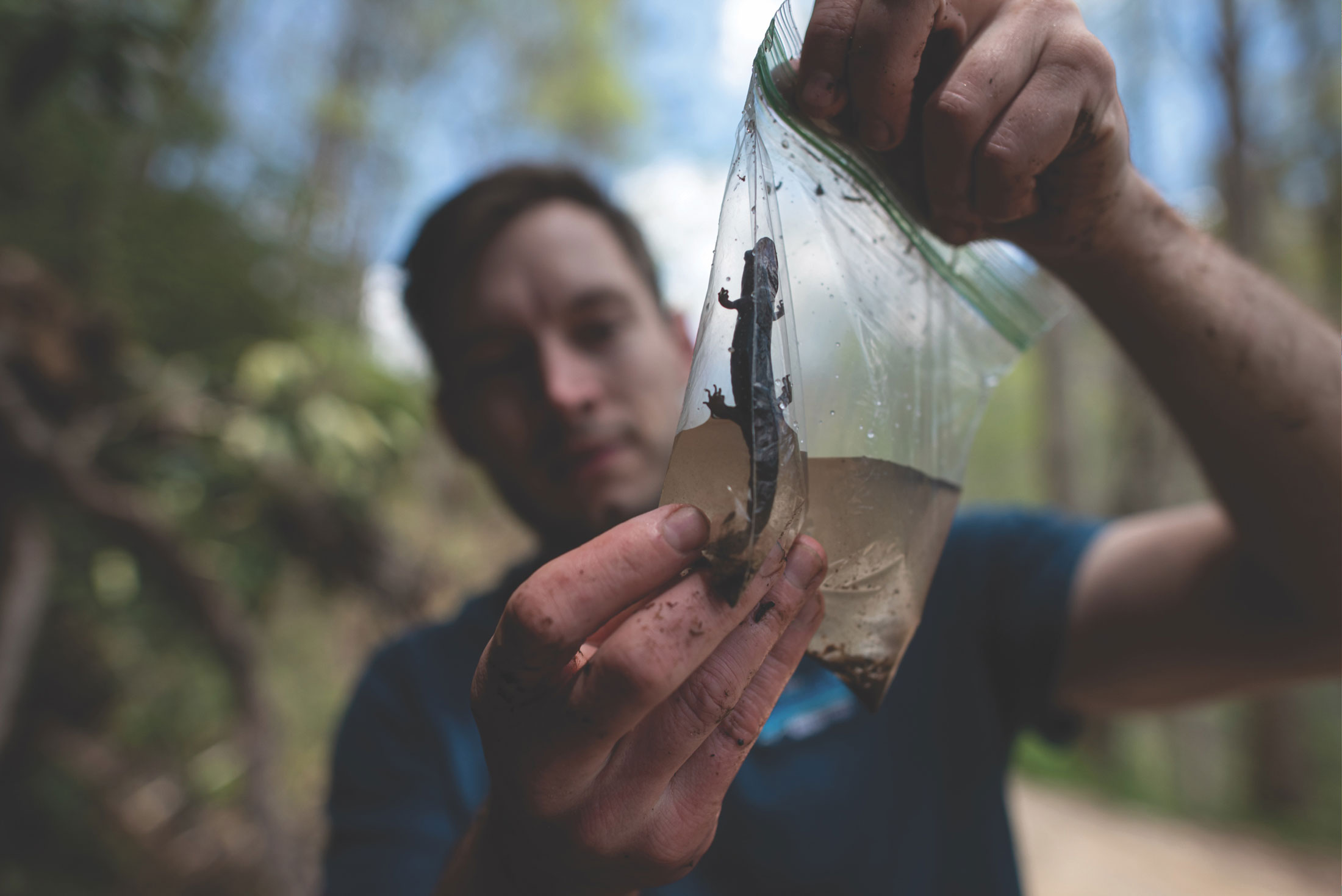
Birds, bees, bears, dragonflies, salamanders, hemlocks, fungi. Scientific research in Great Smoky Mountains National Park addresses a wide swath of subjects. From Tennessee, North Carolina, South Carolina, and states much farther away, scientists from several disciplines have found the park fertile ground for inquiry.
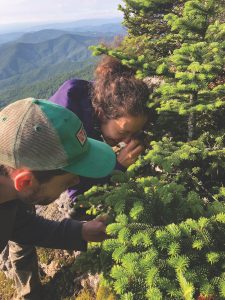
No wonder, since the park is the most biodiverse in the National Park System. Discover Life in America (DLiA), a nonprofit park partner that works to discover, understand, and conserve species in the Smokies, has documented nearly 23,000 species in the park and estimates there may be as many as 60,000 to 80,000. The park is unique, an extremely complex and interconnected environment, giving curious scientists many launchpads for study, according to DLiA Communications Director Jaimie Matzko.
“The park’s geologic history, vast range in elevation, and large amounts of annual precipitation have not only produced an incredible diversity of species, but also an unparalleled number of unique and diverse ecosystems,” Matzko said. “The Smokies also host many rare species found nowhere else—94 endemic species have been confirmed in the park. And it is the largest roadless tract of wilderness east of the Mississippi River, making it ideal for field work and research that require large areas of undisturbed habitats.”
Park research goes down many roads, she said, from conservation biology, genetics, and ecology to the impacts of environmental threats like climate change, air pollution, and invasive species. Knowledge about the park has been growing and finding its way into scientific journals while also increasing on-the-ground understanding. Both directly and indirectly, research has benefited the park and the scientific community studying it.
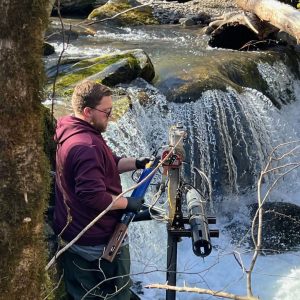
The annual Park Science Colloquium, a scientific show-and-tell supported by DLiA and the National Park Service, gives scientists a forum to present their studies and findings. Launched more than 40 years ago, the event hands scientists the microphone about once a year.
“We had a series of them back in the ’70s, ’80s, and early ’90s, had a break, and then started back again in 2008, and have been unbroken since,” said Paul Super, the park’s research coordinator and event organizer. In its current iteration, the event is exclusively online.
Super’s role could be summed up as “the NPS science guy” in the Smokies. Those who want to engage in science within the park boundary contact him to ask questions or obtain a research permit. In the first quarter of 2025, Super issued 94 permits. In all of 2024, he issued 143.
“We are one of the most-researched national parks in the National Park System. We’ve had over 2,250 research studies that we can document,” Super said, noting the Smokies and Yellowstone lead in the volume of research conducted, running neck-in-neck.
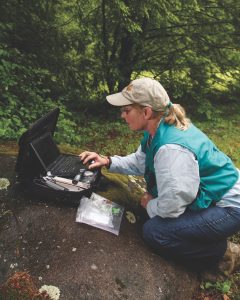
Each scientist’s quest starts by asking questions, and plenty have been asked over the years. Recently, researchers in the Smokies have wondered:
Scientists from a variety of research institutions, such as colleges and government agencies, present their work during the colloquia as they would at academic and professional conferences. They prepare talking points about their hypotheses, methods, variables, limitations, conclusions, and ideas for future inquiry. They also take questions.
Most talks during the colloquia are recorded and posted online. Several years’ worth of presentations can be viewed free on the DLiA YouTube channel. The talks run 15 to 20 minutes, include the presenters’ slides, and are generally understandable by the non-scientist.
The earliest known research in the Smokies dates to 1923, prior to the park’s establishment. J. C. Crawford of the US National Museum, predecessor of the National Museum of Natural History, a Smithsonian institution, traveled to the area to study bees. Crawford described and named several species in his research.
“I have a permit for Crawford from 1923, though I cannot find a publication that clearly indicates he made use of bees collected in what is now the park,” Super said. “I also have a permit for Albert F. Ganier, a founder of the Tennessee Ornithological Society from 1928. He published a lot about birds of the Smokies. I don’t know who was issuing those permits back then.”
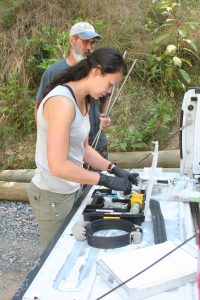
New avian research has come forth in the 2025 and 2023 colloquia. Because the park has been well surveyed in the past, this has led to better knowledge of the current state of birds, a group that shows signs of strain.
Social sciences are also conducted in the park. For Justin Beall, formerly a researcher at Virginia Tech, this meant spending time in the Smokies to research “overtourism,” or excessive visitation, at nature destinations. Beall wanted to find effective ways to reduce stress on popular outdoor destinations and try out ideas to draw tourists to less-frequented spots. The Smokies, which draws upwards of 12 million visitors a year, was his test case.
“Our primary motivation for selecting this park was that it is so heavily visited and, as a result, experiences environmental and social impacts related to overcrowding,” said Beall, who now works as a conservation social scientist in the Rockies.
Because of the timing of his study period—the start of the 2023 fall leaf-peeping season—he was able to collect all his data within three days rather than an anticipated ten. He presented his findings at the 2024 colloquium and hopes to officially publish the results soon.
Will Kuhn, the DLiA director of science and research, has held dual roles for the colloquium, as both an organizer and presenter. Whether in person or virtual, he said, the research presentations never get boring.
“We’re considering ways that we might go hybrid, in-person plus remote, in future years to bring back some of the face-to-face interactivity,” he said. “What hasn’t changed is the incredible quality and breadth of research taking place in the Smokies. I learn lots of new things every year. It’s always stimulating!”
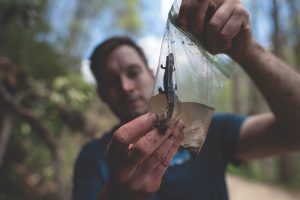
And sometimes, it’s also very concerning. Often, science digs into problems, such as a recent study showing how a pesticide used to control wooly adelgids affects salamanders. Still, it is comforting to know that scientists see the Smokies through the lens of possibility, since scrutiny can lead to improvement. It is Super’s belief that science brings greater knowledge to light with the potential for greater good.
“People still make the management decisions, but the scientific studies help inform those decisions so that they are not made in the dark,” he said.
And, if there’s a theme that connects most of the research, it could be this: the park keeps changing. There’s even a presentation about that.
To learn more about scientific research in the park, check out past Science Colloquium presentations on the Discover Life in America YouTube channel at YouTube.com/DiscoverLifeinAmerica or visit the organization’s website at DLiA.org.
Subscribe to get the latest posts sent to your email.
The Great Smokies Welcome Center is located on U.S. 321 in Townsend, TN, 2 miles from the west entrance to Great Smoky Mountains National Park. Visitors can get information about things to see and do in and around the national park and shop from a wide selection of books, gifts, and other Smokies merchandise. Daily, weekly, and annual parking tags for the national park are also available.